With nearly 15 years as an established footprint in the children’s shoe category, Esquire Brands stands strong with a robust number of accounts. Discover how this positive-thinking company continues to make strides in licensed fashion footwear.

Esquire Brands President Peter Roccamo
An entrepreneur, sourcing guru and licensing expert walk into a bar. It sounds like the beginning of a terrible joke, but it’s the real story of the leadership behind Esquire Brands; CEO Isaac Saada (the entrepreneur), COO Brad Nieder (the sourcing guru) and President Peter Roccamo (the licensing expert) spearhead this children’s footwear company.
If the name Esquire Brands doesn’t ring any familiarity bells, then the fashion footwear they produce surely do: DKNY Kids, Kenneth Cole, Jessica Simpson, and Marc Fisher. Collectively, they have decades of experience in both the fashion and footwear industries. Esquire Brands operates from a core concept of “forward thinking,” which they define with five characteristics of integrity, creativity, quality, value, and customer service. Perhaps that was one of the reasons why they were able to keep the company’s head above water during Covid and keep trucking afterwards.
Each member of this team delivers a distinct set of skills. Saada started in the footwear business in 2005 at a very young age. With a bit of help, started Esquire Brands and found success quickly. His “positive energy” motto, energy and excitement are infectious while his faith and optimism drive him and others to greater levels of achievement.
In 2019, Saada connected with Nieder, a long-time vendor partner and footwear veteran. Nieder, who started his career at Elan Polo, has a strong sourcing background and a large matrix of agents and factories in China. He possesses a broad knowledge of the market and operations and helped navigate the company through the pandemic.
That same year, Saada brought Roccamo on as president. Roccamo started his career in footwear, importing shoes from Italy. In 2004, he sold his company and went to work for Synclaire Brands and rose to senior roles, where he was instrumental in growing their licensed fashion kids’ shoes. Roccamo brings a vast knowledge of the kids’ fashion business and strong brand/licensing experience.
Earnshaw’s spoke to Roccamo about the strategic building of the leadership, the licensing journey for each brand, how each executive has leveraged their experience, and the ways in which the company has tackled market challenges.
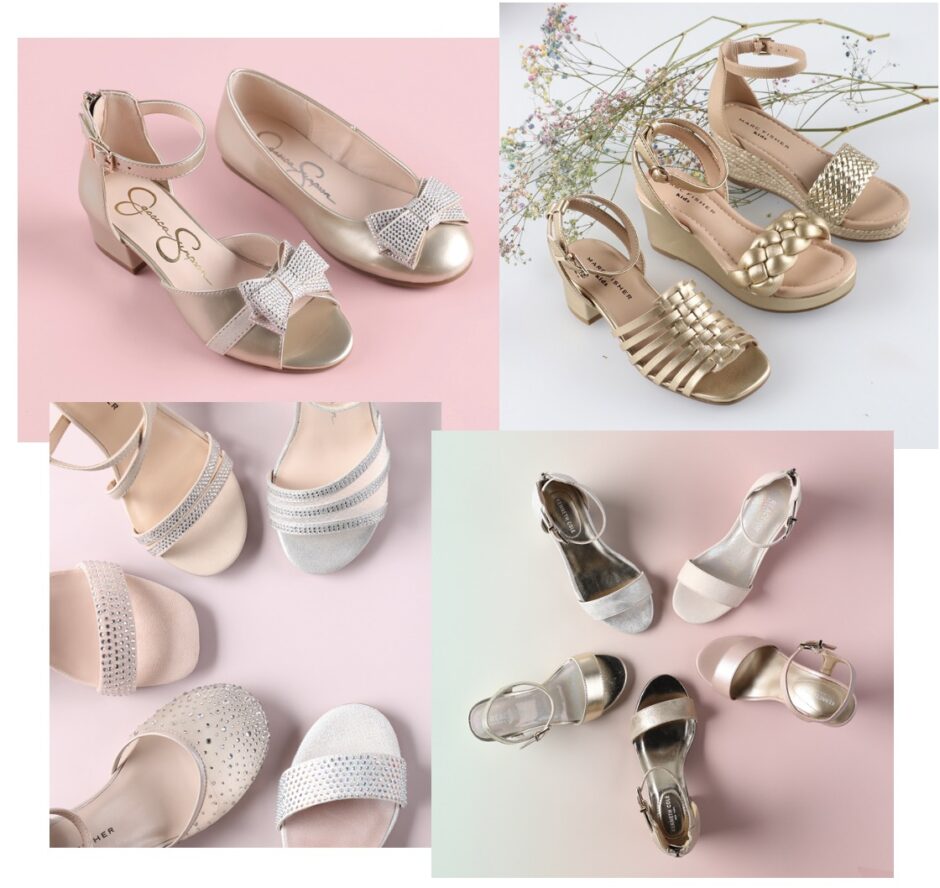
Clockwise from top left: Jessica Simpson, Marc Fisher, Kenneth Cole
Earnshaw’s: What’s the history of the company?
Roccamo: Esquire Brands started out as a company that was producing women’s private label. Around 2013, Isaac started to transition the company into a kids’ character business. He signed licenses for many popular characters, including Build a Bear, which was one of his biggest brands. But Isaac always had the idea of being in the fashion segment of the business.
In 2019, I left Synclaire Brands and joined Isaac, and we began the journey to obtain fashion brands. Our first brand was DKNY kids, which was immediately successful. We started working on our second brand, Kenneth Cole. Kenneth was looking for a new home and we had a previous history, so it was an easy transition to bring his brand on board with us.
When Covid hit, Synclaire brands filed for bankruptcy and the one of the last brands that the company had signed was Jessica Simpson. When I knew that this brand would be available again, I immediately reached out and Jessica Simpson became our third brand. I knew Marc Fisher himself and the president of the company, Susan Itzkowitz, from my days of working with the adult brands of Tommy Hilfiger, Ivanka Trump and Tretron. We started the Marc Fisher Kids collection in the Fall of 2022, and it has quickly become a great brand for us.
Earnshaw’s: What do you think is the special sauce behind the four major brands that the company manufactures?
Roccamo: We feel that nationally known fashion brands will always do well. We can cover all channels of distribution and the perceived value is great. Following the trends of adults allows us to use their strength to our advantage. Having worked with some of these brands in my previous role has help in the transition from the previous licensee.
Earnshaw’s: Please explain the development process from fashion concept to final product.
Roccamo: Our design staff will begin working on a new season by using trend agencies, and our licensors develop the trends that we plan for kids. We do a great deal of trend shopping and idea gathering, focusing on take-down concepts from the adult collections. Then the CAD phase begins as we match CADS to the merchandise plan that we put together for each brand. We go through three rounds of CAD development before we put our final collection together. We get the CADS approved by licensors, and we begin the process of developing sales samples. At the same time, our sales team starts to work with key retailers to choose the styles they want. We need to complete our sales samples in time for the FFANY market week. From there, orders are placed overseas for delivery in the upcoming season.
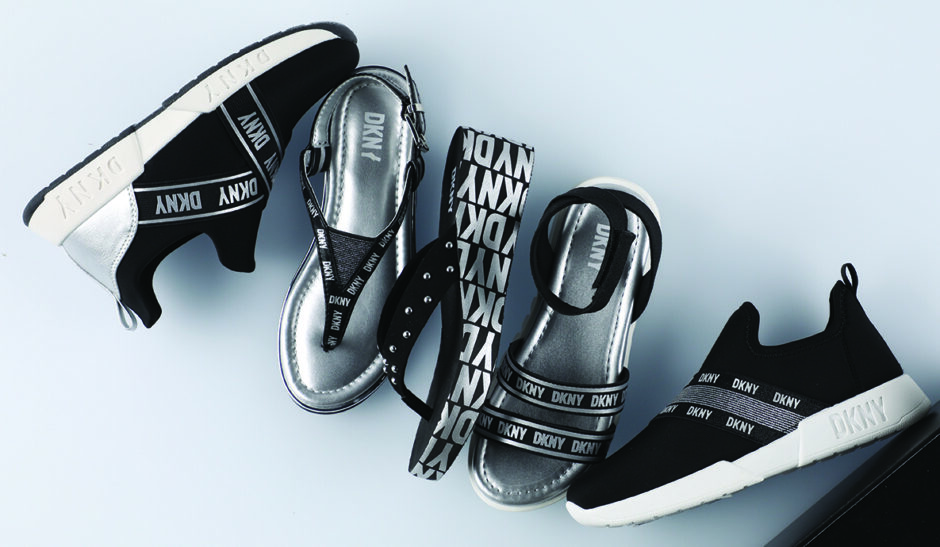
DKNY Kids
Earnshaw’s: What are some of the key market trends in kids’ footwear for Fall/Winter 2023?
Roccamo: Court shoes, caged chunky trainers, high side-wall joggers, and high-all court shoes. Combat and hiker boots are also still strong.
Earnshaw’s: How many doors are you in? Has this been an increase or decrease from years past and why?
Roccamo: We are in approximately 6,500 doors across all channels of distribution. That number has stayed fairly the same as retail has been stagnant through the pandemic and most recent inflation worries. Most retailers are reluctant to start new brands and most are trying to work through a heavy overstock situation.
Earnshaw’s: Who are your top five accounts and what do you think makes them successful?
Roccamo: Our top accounts are Macy’s, Zappos, Amazon, Belk, and Nordstrom. Macy’s has a strong online presence and a good footprint in brick and mortar. Even as they continue to navigate retail coming out of Covid, they are making the right moves to continue to stay relevant in the market. Amazon has seen strong growth, which is in part due to the pandemic push to online. Zappos continues to be a stronger player in the online arena. Belk has been a surprise for us because they are coming out of bankruptcy–since we’ve been doing so well for spring and fall, we’re looking to grow our business there. Nordstrom and Nordstrom Rack have always been strong in kids’ footwear, and our Marc Fisher collection is selling well for them.
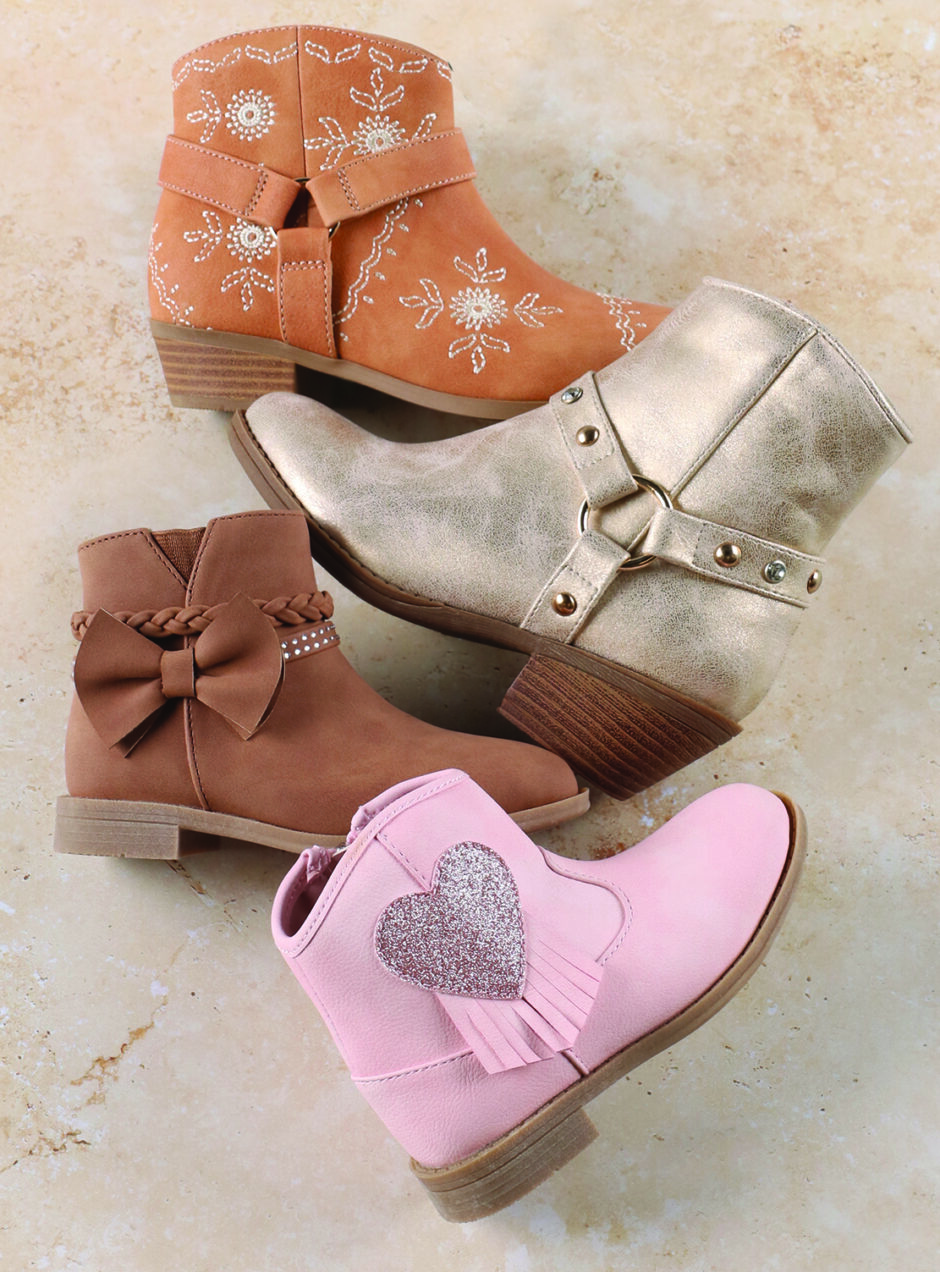
Jessica Simpson
Earnshaw’s: What’s your approach to merchandising support for your accounts?
Roccamo: We work hard to tailor our collections to fit their needs. We work very closely with them right from the beginning of development to make sure they have what they need to be successful. It’s important to offer as much merchandising support as you can, because buyers’ workloads have increased dramatically. They are responsible for so much, so helping them merchandise the collection and making them feel good about their picks is imperative to growing your business.
Earnshaw’s: What industry changes have you seen over the last five years?
Roccamo: There has been a great deal of change. We have seen a consolidation of brands and retailers who did not survive Covid. The companies that were struggling were not capable of the rapid change that hit the market. On the other hand, the survivors have been keeping most things status quo and trying to adjust to the market changes.
Earnshaw’s: What is most challenging about the kids’ footwear industry?
Roccamo: The main challenge right now is the volatility in the market. The upper tier of the market was hit the hardest during Covid. The off-price channel has fared the best in this environment as consumers moved downstream to find better prices. Stimulus money and consumers being stuck in the house fueled retail sales. That all dried up when the stimulus ended, and inflation started to affect the market. The other challenges facing the kids’ market is the overall reduction of retail outlets. The closing of key retailers, and reduction in the volume of stores has affected the number of channels of distribution. And the shift from not enough inventory to a flood of product has basically halted future sales. Most retailers are working through selling their current stock and not looking at much open-to-buy for future business.
Earnshaw’s: What do you think are the strongest attributes of the company?
Roccamo: I think that we excel at addressing the changes in trends and the market. The best thing about us is that we are nimble—we can pivot to stay in the forefront.
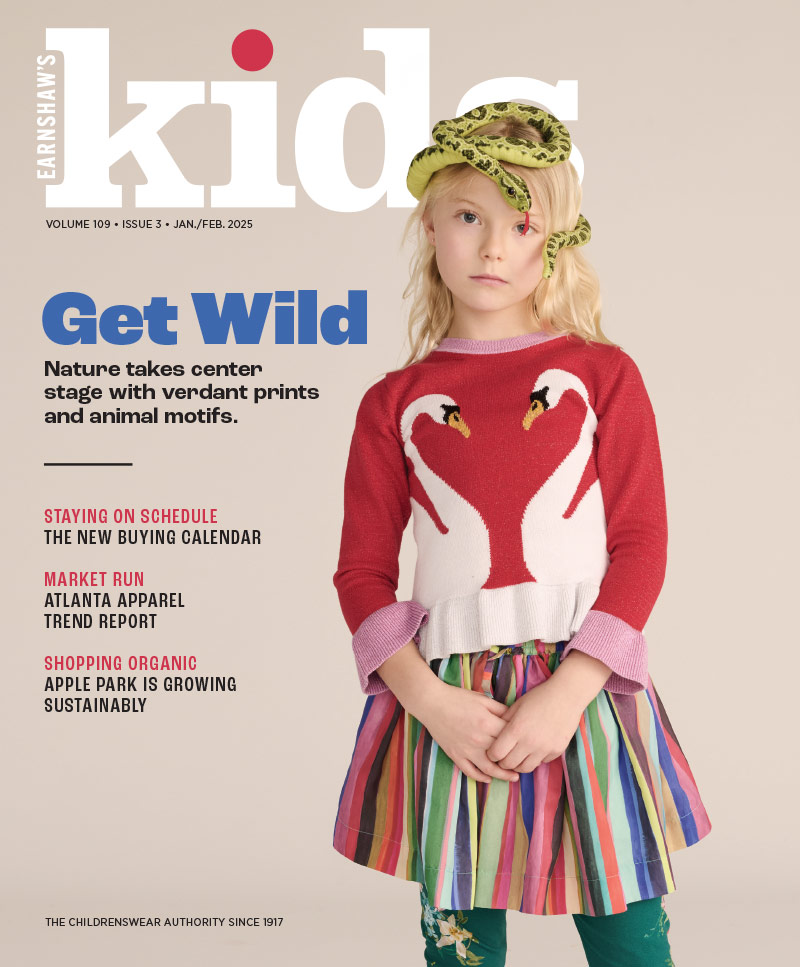

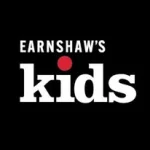

 From milestones to everyday magic, @ryleeandc
From milestones to everyday magic, @ryleeandc

 BEST IN SHOW: @milaandrose
Twirl-worthy, pla
BEST IN SHOW: @milaandrose
Twirl-worthy, pla





 This season’s
This season’s

 We had an i
We had an i


 Make Your Message Unmissable in 2025!
Get ahea
Make Your Message Unmissable in 2025!
Get ahea





 F
F



Leave a Comment: